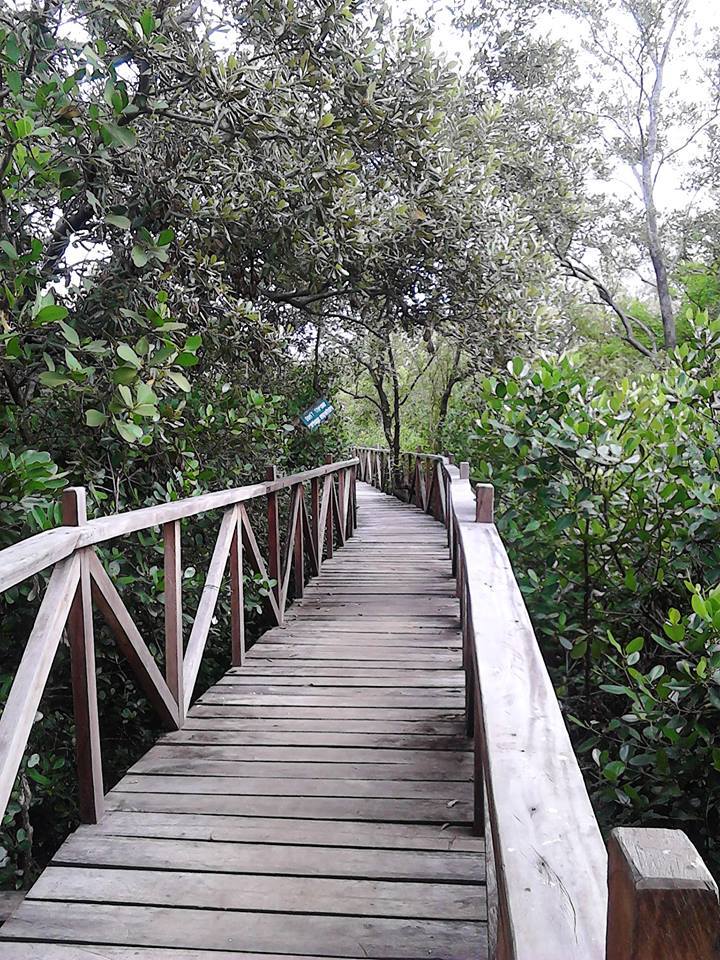Ibajay, Aklan
Under the Spanish - "Panay Y Bayjay"
The autonomous barangays that the Spaniards encountered in Cebu could barely provide them with food enough for their needs. Miguel López de Legazpi had to move his camp sailing from Cebu to Panay Island in 1569.
Desiring to explore the island for food and spice, Legazpi ordered some of his men to move further on the Island until they run out of bread to eat. Tired and hungry, the Spaniards solicited something to eat from the natives. To their surprise, they were given a container full of brown rice. When the Spaniards asked the natives what kind of rice they gave, they politely replied, “ba-hay,” meaning, a third class rice. In recognition of the generosity of the natives, they named the place, “Panay y bahay” – the place in Panay where there was and the Spaniards were given “ba-hay” rice.
The word Ibajay was originally written with the capital letter Y. It was only in 1902 when an American supervising teacher made the change of Ybajay to Ibajay because of the preference to the English alphabet and the difficulty of the Americans in spelling the word.
The first seat of government by the Spanish authorities was in Boboc-on, Barangay Naile in the 17th century. The system of government that the Spaniards established was the encomienda. They rule the natives by control from a royal grant from the King of Spain. The King of Spain appointed an encomiendero as the overseer with the Governadorcillo, Cabeza Mayores and Cabezas de Barangay as subordinates.
In the early part of the Spanish dominion, the barangay was made the basic structure of government in Ibajay. The Chieftain collected tributes from his sinakupan (people) and turn over the collections to the encomienderos. Later on, however, the barangay government was reorganized again into sakups. With each has to elect a governadorcillo. The governadorcillo was elected by the votes of selected married male natives called principales. The candidate has to be recommended and nominated by the community, or by the encomiendero.
But to the eyes of the natives, the village chief was just an administrative leader. He was not an absolute ruler like the Spaniards imposed. A traditional body of customs and procedures limited the scope of his authority. Although his position had become hereditary, it was originally attained by an exhibition of greater prowess and valor, traits useful for the community’s survival.
Dismayed by the exploitative nature of the government system and their unwillingness to accept the Spanish sovereignty, Chieftains Hangoe, Sandok and Kabatak fled to the vast mountains of Panay. Still, the Spanish continued their colonization. The natives could not do anything but accept the dictum of the Spaniards to survive and go on with their lives.
The first native to hold public office in Sitio Boboc-on as governadorcillo was Don Francisco Dalisay who was elected by the principales in 1673. However, Muslim pirates and bandits from Mindanao often pestered the town. Hence, in 1786, Governadorcillo Juan Sabino moved the seat of government to Sitio Maganhup, a wide land between now Barangay Naile and Barangay San Jose. The new site however, did not prove to be safe from the continued beleaguering of the lawless elements. Furthermore, it was not an ideal, area for the natives because it was far from the farms they cultivate.
Consequently, for the second time in 1792, Governador Jose Garcia transferred the seat of government to Sitio Adiango, now part of Barangay Laguinbanua. However, it only stayed there for 11 years. Capitan Josef Flores moved again the seat of government to its present location. By the decree issued by the Governador of the Philippine Islands, watchtowers were fortified along the shorelines to give warning and protection against bandits and crooks. A church was also erected.
Revolution and American influence
The Philippine Revolution broke out in the later part of the 19th century. The Tagalog Insurrectos under the leadership of Gen. Ananias Diokno defeated and drove away the Spaniards who were hiding behind the buttress of the Catholic Convent in Poblacion.
The Philippine flag was hoisted at the town square for the first time. In the year 1879, Don Ciriaco Tirol y Seneres was appointed as acting Capitan Municipal until 1898. The following year, under the revolutionary government of Gen. Emilio Aguinaldo, Don Antonio Manikan was elected Capitan Municipal. The position he held until 1901.
In 1902, The Americans reorganized the local government of Ibajay. They changed the designation of the head of the town from Capitan Municipal to Municipal President. It was also during this year that the official name of the town was changed from Ybajay to Ibajay.
The first Municipal President elected was Don Valintin Conanan. During his term, a cholera epidemic broke out in the Municipality of Ibajay. It snapped out so many lives. As a contingency, a new cemetery was opened near the Catholic Cemetery. It is now known as the Ibajay Municipal Cemetery.
In the year 1921, Catalino Solidum was appointed Municipal President. He held the position for only a year. Moises T. Solidum replaced him the following year until the year 1925. Tomas Bautista became the mayor of Ibajay from 1926 to 1928, while Jose S. Conanan from 1937 to 1940.
In 1941, Dr. Jose C. Miraflores became the mayor until the outbreak of World War II. Ibajay, that time, was razed to the ground by the Japanese troops. Many Ibayhanons suffered the painful consequences of the war. Also that time, Guerila Liberation Movement helped to the Philippine forces became popular among the locals. Ibayhanon women formed the Ibajay Ladies Auxialliary War Relief Association (LAWRA) to raise funds and morale of the Revolutionary Army. In 1944 to 1945, started the liberation, many Filipino troops of the 6th, 61st and 62nd Infantry Division of the Philippine Commonwealth Army and the 6th Infantry Regiment of the Philippine Constabulary was liberated the town of Ibajay, Aklan and helping Ibayhanon guerrilla groups and defeating Japanese troops at the end of World War II. Moreover, the local civil government was established with Guillermo de los Reyes as acting Municipal Mayor Moises T. Solidum later on replaced him until 1946.
The autonomous barangays that the Spaniards encountered in Cebu could barely provide them with food enough for their needs. Miguel López de Legazpi had to move his camp sailing from Cebu to Panay Island in 1569.
Desiring to explore the island for food and spice, Legazpi ordered some of his men to move further on the Island until they run out of bread to eat. Tired and hungry, the Spaniards solicited something to eat from the natives. To their surprise, they were given a container full of brown rice. When the Spaniards asked the natives what kind of rice they gave, they politely replied, “ba-hay,” meaning, a third class rice. In recognition of the generosity of the natives, they named the place, “Panay y bahay” – the place in Panay where there was and the Spaniards were given “ba-hay” rice.
The word Ibajay was originally written with the capital letter Y. It was only in 1902 when an American supervising teacher made the change of Ybajay to Ibajay because of the preference to the English alphabet and the difficulty of the Americans in spelling the word.
The first seat of government by the Spanish authorities was in Boboc-on, Barangay Naile in the 17th century. The system of government that the Spaniards established was the encomienda. They rule the natives by control from a royal grant from the King of Spain. The King of Spain appointed an encomiendero as the overseer with the Governadorcillo, Cabeza Mayores and Cabezas de Barangay as subordinates.
In the early part of the Spanish dominion, the barangay was made the basic structure of government in Ibajay. The Chieftain collected tributes from his sinakupan (people) and turn over the collections to the encomienderos. Later on, however, the barangay government was reorganized again into sakups. With each has to elect a governadorcillo. The governadorcillo was elected by the votes of selected married male natives called principales. The candidate has to be recommended and nominated by the community, or by the encomiendero.
But to the eyes of the natives, the village chief was just an administrative leader. He was not an absolute ruler like the Spaniards imposed. A traditional body of customs and procedures limited the scope of his authority. Although his position had become hereditary, it was originally attained by an exhibition of greater prowess and valor, traits useful for the community’s survival.
Dismayed by the exploitative nature of the government system and their unwillingness to accept the Spanish sovereignty, Chieftains Hangoe, Sandok and Kabatak fled to the vast mountains of Panay. Still, the Spanish continued their colonization. The natives could not do anything but accept the dictum of the Spaniards to survive and go on with their lives.
The first native to hold public office in Sitio Boboc-on as governadorcillo was Don Francisco Dalisay who was elected by the principales in 1673. However, Muslim pirates and bandits from Mindanao often pestered the town. Hence, in 1786, Governadorcillo Juan Sabino moved the seat of government to Sitio Maganhup, a wide land between now Barangay Naile and Barangay San Jose. The new site however, did not prove to be safe from the continued beleaguering of the lawless elements. Furthermore, it was not an ideal, area for the natives because it was far from the farms they cultivate.
Consequently, for the second time in 1792, Governador Jose Garcia transferred the seat of government to Sitio Adiango, now part of Barangay Laguinbanua. However, it only stayed there for 11 years. Capitan Josef Flores moved again the seat of government to its present location. By the decree issued by the Governador of the Philippine Islands, watchtowers were fortified along the shorelines to give warning and protection against bandits and crooks. A church was also erected.
Revolution and American influence
The Philippine Revolution broke out in the later part of the 19th century. The Tagalog Insurrectos under the leadership of Gen. Ananias Diokno defeated and drove away the Spaniards who were hiding behind the buttress of the Catholic Convent in Poblacion.
The Philippine flag was hoisted at the town square for the first time. In the year 1879, Don Ciriaco Tirol y Seneres was appointed as acting Capitan Municipal until 1898. The following year, under the revolutionary government of Gen. Emilio Aguinaldo, Don Antonio Manikan was elected Capitan Municipal. The position he held until 1901.
In 1902, The Americans reorganized the local government of Ibajay. They changed the designation of the head of the town from Capitan Municipal to Municipal President. It was also during this year that the official name of the town was changed from Ybajay to Ibajay.
The first Municipal President elected was Don Valintin Conanan. During his term, a cholera epidemic broke out in the Municipality of Ibajay. It snapped out so many lives. As a contingency, a new cemetery was opened near the Catholic Cemetery. It is now known as the Ibajay Municipal Cemetery.
In the year 1921, Catalino Solidum was appointed Municipal President. He held the position for only a year. Moises T. Solidum replaced him the following year until the year 1925. Tomas Bautista became the mayor of Ibajay from 1926 to 1928, while Jose S. Conanan from 1937 to 1940.
In 1941, Dr. Jose C. Miraflores became the mayor until the outbreak of World War II. Ibajay, that time, was razed to the ground by the Japanese troops. Many Ibayhanons suffered the painful consequences of the war. Also that time, Guerila Liberation Movement helped to the Philippine forces became popular among the locals. Ibayhanon women formed the Ibajay Ladies Auxialliary War Relief Association (LAWRA) to raise funds and morale of the Revolutionary Army. In 1944 to 1945, started the liberation, many Filipino troops of the 6th, 61st and 62nd Infantry Division of the Philippine Commonwealth Army and the 6th Infantry Regiment of the Philippine Constabulary was liberated the town of Ibajay, Aklan and helping Ibayhanon guerrilla groups and defeating Japanese troops at the end of World War II. Moreover, the local civil government was established with Guillermo de los Reyes as acting Municipal Mayor Moises T. Solidum later on replaced him until 1946.



